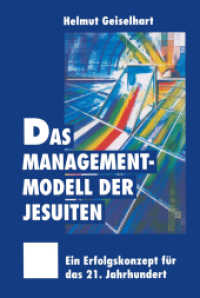- ホーム
- > 洋書
- > ドイツ書
- > Mathematics, Sciences & Technology
- > Earth Science
- > geography
Full Description
This edited book investigates the interrelations of disaster impacts, resilience and security in an urban context. The scope is to narrow down resilience from an all-encompassing concept to applied ways of scientifically attempting to ‚measure' this type of disaster related resilience.








